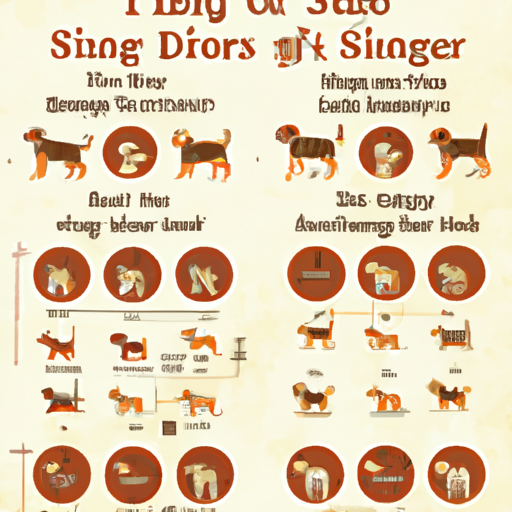Determining a dog’s age is not as simple as looking at its teeth or counting the number of its wrinkles. It involves understanding the breed, looking at physical and behavioral changes, and sometimes, even consulting with a veterinarian. Here’s how you can determine a dog’s age in a more accurate and comprehensive way.
H2: Understanding the Breed
Different dog breeds age at different rates. For example, smaller breeds tend to age slower compared to larger breeds. A small breed dog might be considered a senior at around 10-12 years, while a large breed dog might reach the same age at around 5-6 years.
Here’s a simple table to give you an idea:
| Breed Size | Senior Age |
|---|---|
| Small Breeds | 10-12 years |
| Medium Breeds | 8-10 years |
| Large Breeds | 5-6 years |
H2: Looking at Physical Changes
Just like humans, dogs show physical signs of aging. Here are some signs to look for:
- Graying Hair: This usually starts around the muzzle and spreads to other parts of the body as the dog ages.
- Loss of Muscle Mass: Older dogs tend to lose muscle mass, especially if they are less active.
- Dental Health: Older dogs may have yellowed teeth, gum disease, or missing teeth.
- Changes in the Eyes: Dogs may develop a cloudy appearance in their eyes as they age.
H2: Observing Behavioral Changes
Behavioral changes can also indicate a dog’s age. Here are some changes you may observe:
- Increased Sleep: Older dogs tend to sleep more and have less energy.
- Difficulty Moving: They may have trouble getting up, climbing stairs, or jumping.
- Changes in Appetite: Older dogs may eat less or have trouble chewing.
- Changes in Behavior: They may become less interested in play or show signs of confusion.
H2: Consulting a Veterinarian
If you’re unsure about your dog’s age, it’s always a good idea to consult with a veterinarian. They can conduct physical exams and tests to give you a more accurate estimate of your dog’s age.
H2: Frequently Asked Questions
Q: Can a dog’s age be determined by its teeth?
A: This is a common myth, but it’s not completely accurate. While a dog’s teeth can give some clues about its age, it’s not a definitive method.
Q: Does a dog’s size influence its aging process?
A: Yes, smaller breeds tend to live longer and age slower compared to larger breeds.
Q: What are some signs that my dog is getting old?
A: Signs can include graying hair, loss of muscle mass, changes in the eyes, increased sleep, difficulty moving, and changes in appetite and behavior.
Q: How can a veterinarian determine my dog’s age?
A: A veterinarian can conduct physical exams and tests, such as blood tests and x-rays, to help determine your dog’s age.
Remember, every dog is unique, and these are just general guidelines. The best way to determine a dog’s age is to observe its physical and behavioral changes, understand its breed, and consult with a veterinarian.



